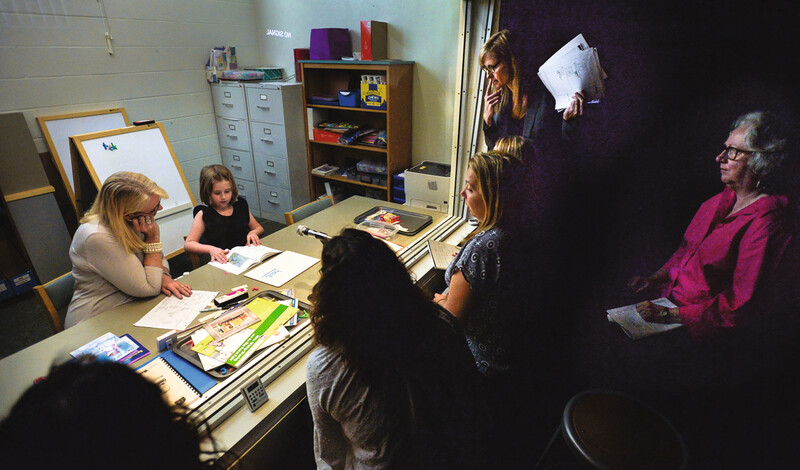In 2004, Sports Illustrated reporter Gary Smith traveled to one of the poorest towns in America to find the magic behind an unlikely dynasty in high school athletics—sons of migrant field workers who had racked up nine California state titles in a sport often considered the domain of privileged youth: cross- country running. The team's coach, Jim White, jokingly credited their success to a secret "voodoo juice" his runners rubbed on their legs before meets. In truth, the real magic, as depicted in the film McFarland, USA, appears to have come from within the students themselves, most of whom spoke English as a second language. These young men became successful both athletically and academically when they came to see their challenges as strengths. Their success story runs counter to the larger narrative of the achievement gap between English language learners (ELLs) and non-ELLs—a gap which, despite various approaches being tried over the years, has remained virtually unchanged since 1998 (Ross, 2015).
Second-Language Acquisition Is Complex
On the surface, learning a second language may seem to be a simple one- to two-year undertaking. Research shows, however, that it's a far more complex endeavor—or amazing feat, depending on your point of view. Consider the depth of learning required to become academically proficient in a second language:
Language learners learn the basics of reading in a second language quickly, but comprehension takes longer. ELLs can pick up decoding, word recognition, and spelling within roughly two years, but more complex skills, such as reading comprehension and writing, take many more years (Connell, 2004).
Social English develops quickly; academic language takes longer. Most second- language learners become conversant in English within a relatively short period of time. However, their apparent fluency (which can lead them to be mainstreamed into regular classrooms) can mask a lack of academic command of their second language—that is, the ability to engage with complex classroom content (Butcher & Ramirez, 2008).
Vocabulary is key, but building it requires robust teaching strategies. A key factor underlying these phenomena appears to be vocabulary. Even seemingly fluent second-language learners may still possess only 2,000 to 7,000 words in English compared to the 10,000 to 100,000 words native speakers possess (Burt, Peyton, & Van Duzer, 2005). This difference is crucial, as students' 1st grade vocabularies predict their reading comprehension 10 years later (Cunningham & Stanovich, 1997). Building academic vocabulary requires not just having students memorize word lists, but also giving them opportunities to practice structured classroom dialogue and to think about and clarify word meanings (August, Carlo, Dressler, & Snow, 2005).
Misconceptions
Mainstream teachers, however, often don't receive appropriate professional development on second- language acquisition (Apthorp, Wang, Ryan, & Cicchinelli, 2012) and thus may underestimate these complexities. Teachers might harbor misconceptions about second-language learners, which in turn might influence how they interact with students. A survey of 729 teachers in a midwestern U.S. district with high numbers of ELLs, for example, found that although most teachers (80 percent) believed students, in theory, could be fully bilingual, more than half (52 percent) saw students not speaking English at home as an impediment to their success—a view, incidentally, not supported by research (Karabenick & Clemens Noda, 2004).
Teachers who viewed students' native languages in a more positive light reported better attitudes about having ELLs in their classrooms and greater confidence in their ability to teach ELLs (Caprara, Barbaranelli, Steca, & Malone, 2006).
Flipping the Paradigm
Unrealistic expectations and ambivalence toward students' native languages may reflect what some say is deeply ingrained "deficit thinking" about ELLs—a belief that students (or their families) are at fault for their low performance, which prevents educators from examining their own practices or the system as part of the problem. A growing chorus of researchers and practitioners have begun calling for educators to flip the paradigm—to see language and cultural diversity not as a problem, but as an opportunity to prepare all students for a globally connected world.
Recently, the Annenberg Institute for School Reform highlighted a number of "asset-based" approaches to ELL instruction, including the International Charter School in Pawtucket, Rhode Island, a two-way immersion school where all students are labeled as second-language learners and help one another learn a second language. Something as intangible as asset-based thinking is hard to measure, but anecdotally, the approach shows promise. Latino students and ELLs in this school are significantly outperforming their peers across the state (Nora, 2013).
The movie McFarland, USA portrays Jim White as a reluctant resident of the town who slowly came to appreciate his students' strengths. The real Jim White, however, settled in McFarland right after college and invested time and heart in his students, knowing full well the uphill road they faced, but also the inner strengths they had to draw from. ELLs are engaged every day in an amazing feat that requires great persistence. Recognizing this may help us begin to see our second-language learners in a different light, which itself may work more magic than any "voodoo juice."



